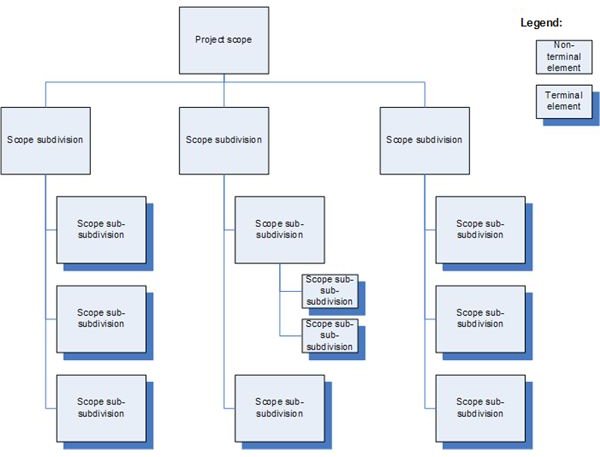Use WBS Nomenclature to Maintain Project Clarity
What to Look for in a WBS
A Work Breakdown Structure (WBS) is a hierarchical way of looking at a project. The general format of a WBS comes in 4 to 6 levels,
where the top 3 levels are generally refer to the general management of the project while the lower rungs become quite technical with elementary tasks or outsourced components being at the very bottom.
Image Credit: Wikimedia Commons/Mkoval
WBS Nomenclature Considerations
WBS nomenclature refers to the name each level of the Work Breakdown Structure is given. For example, many project managers might call the top level of the WBS the “Program” and then call the second level where components break off the “Project” level. Level 2 includes all the major sub-systems that are included in the project.
The third level of the WBS nomenclature is generally called the task level where each major task that comes under the project sub-system (level 2) are listed. Here you find all the task activities for every level 2 task. Each task is broken out to sub tasks in level four which in turn are followed by one or more work packages at level 5.
According to this nomenclature, the bottom level is the “component level” where the contents of each work package are itemized (if necessary). Outsourced work will normally end at the work package level, where the contractor will manage it and the components on the level beneath.
Leaving a WBS with such a generic naming conventions can be problematic, leading many to use the so-called “deliverables” naming convention to complete the WBS.
Because of this, the top level should normally be labelled with the project name and Subsequent levels should be labeled in ways that connect parent components with child processes that break out of them.
Some general practices for WBS nomenclature describe the different parts of the WBS diagram. For example, the term WBS element would refer to any discrete part of the diagram. These components can be upper elements like parent elements and lower, child elements.
The WBS Dictionary
For the sake of clarity, WBS nomenclature must be clearly worded and consistent throughout. To help avoid misunderstandings, a WBS dictionary can be developed that explains every part of the WBS. The information contained here will make it possible for anyone who is reviewing the WBS to understand what each entry means. The information included in the WBS dictionary may include WBS numbers, details about each element, entities responsible for performing work, deliverable recipients, costs in time and money for each work package, and the standards used to measure progression at each level.
Conclusion
When an effective WBS nomenclature is in use, team members and other stakeholders will be able to quickly understand the project at hand. Although the WBS dictionary can serve to resolve uncertainty, a clearly worded, consistent WBS nomenclature will go a long way to minimize reliance on the WBS dictionary.
